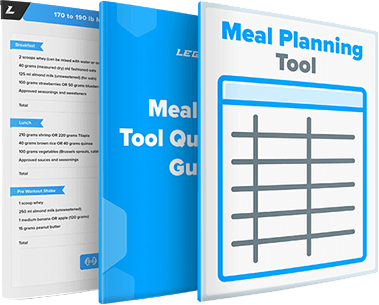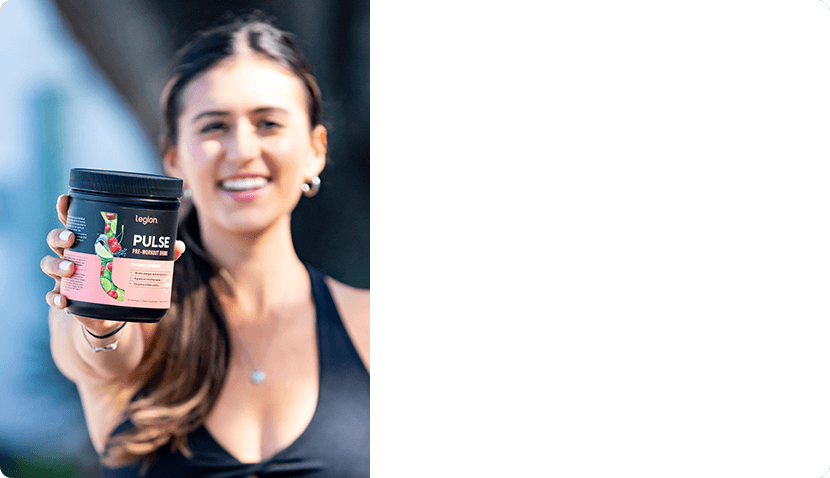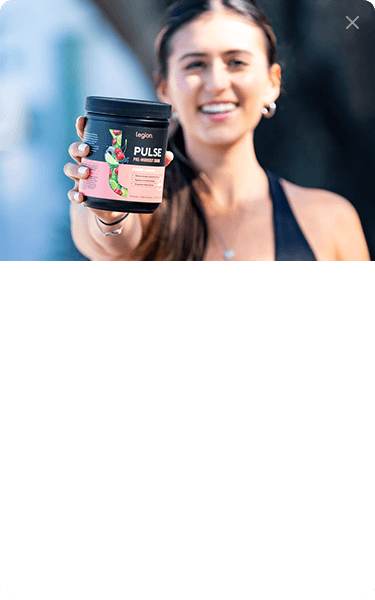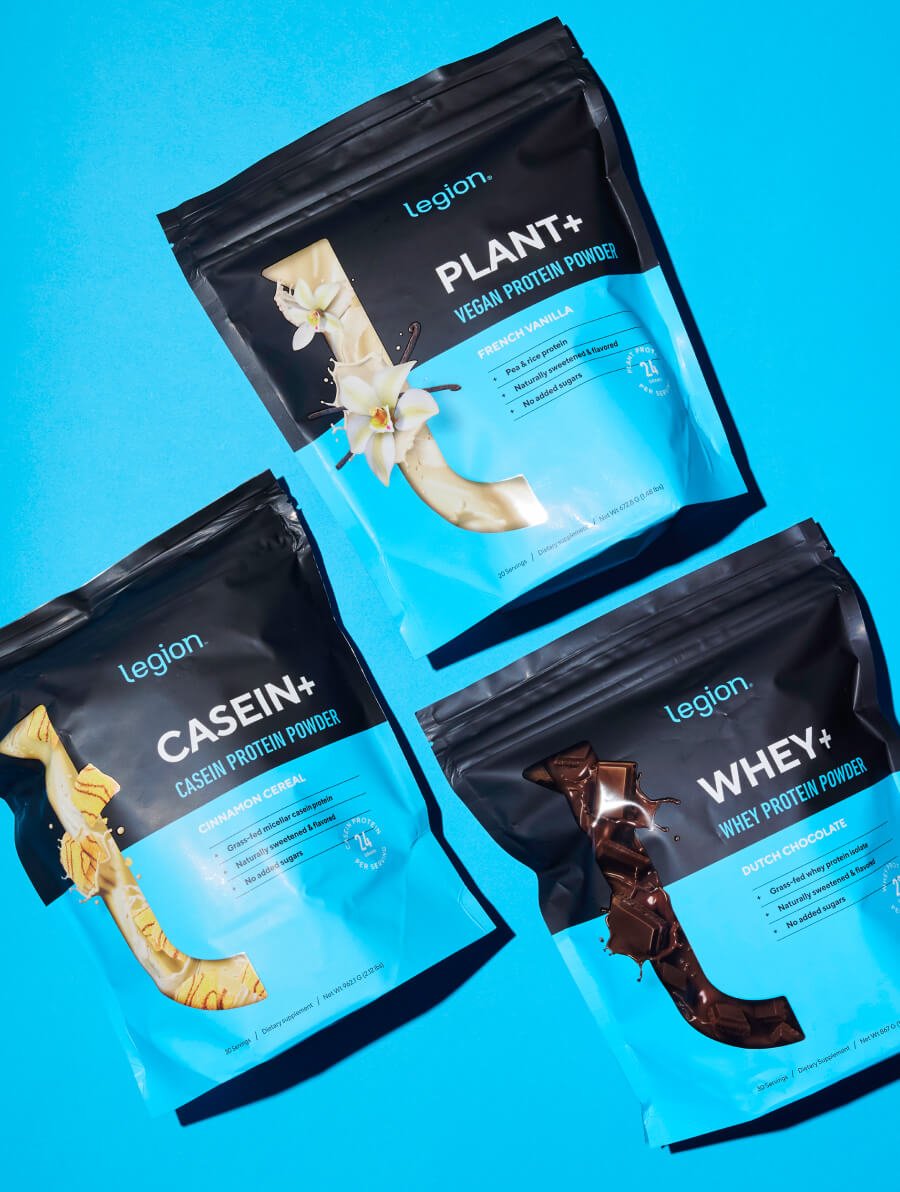Listen on Apple Podcasts | Listen on Spotify | Listen on YouTube
This episode is one of the chapters of the new second edition of my bestselling book for experienced weightlifters, Beyond Bigger Leaner Stronger, which is live now at www.bblsbook.com.
In this book, you’ll learn science-based and time-proven formulas for eating and training that’ll help you shatter muscle and strength plateaus, set new personal records, and build your best body ever.
And better yet, you’ll do it without following restrictive or exotic diets, putting in long hours at the gym, or doing crushing workouts that leave you aching from tip to tail.
Also, to celebrate this momentous occasion, I’m giving away over $6,000 of glorious goodies, including . . .
- 30-minute Zoom call with yours unruly
- Vitamix blender
- WHOOP fitness tracker
- $200 Lululemon gift card
- One month of Legion VIP coaching
- Inzer weightlifting belt
- And much more . . .
All you have to do for a chance to win is…
- Head over to bblsbook.com, and buy a copy of BBLS 2.0 (any format)
- Forward the receipt email to [email protected]
. . . and voila, you’re entered in the giveaway.
You have to act fast, though, because the launch bonanza ends and the winners will be chosen on October 16th.
You can also increase your chances of winning by buying extra copies of the book (any formats). Specifically . . .
- If you buy 3 copies, you’ll get 5 giveaway entries (+400% chance to win).
- If you buy 5 copies, you’ll get 8 giveaway entries (+700% chance to win).
- If you buy 10 copies, you’ll get 15 giveaway entries (+1400% chance to win) plus an autographed copy of the book.
So, for instance, if you buy the paperback, ebook, and audiobook, you’ll get 5 entries to win, and if you buy 3 paperbacks as well as the ebook and audiobook, you’ll get 8 entries, and so forth.
And what are you going to do with extra books, you’re wondering?
You could give them to your workout buddies, donate them to your local library, hurl them at unpleasant children, I don’t know—there are so many options when you think about it.
Anyway, to learn more about the giveaway and get your copy of Beyond Bigger Leaner Stronger 2.0, head over to www.bblsbook.com.
Alright, let’s get to the episode.
Timestamps:
6:26 – Fish
10:57 – Garlic
13:55 – Blueberries
15:17 – Cranberries
17:18 – Oats
19:48 – Cruciferous vegetables
23:11 – Black seeds
Mentioned on the show:
Beyond Bigger Leaner Stronger 2.0
What did you think of this episode? Have anything else to share? Let me know in the comments below!
Transcript:
Hey, Mike Matthews here and welcome to another episode of Muscle For Life. Thank you for joining me today, and what do I have in store for you? This episode is one of the chapters of the new second edition of my best selling book for Experienced Weightlifters Beyond Bigger, Leaner, Stronger, which is.
Right now [email protected]. Now in this book, you will learn science based and time prudent formulas for eating and training that will help you shatter muscle and strength plateaus. Set new personal records and build your best body. Ever and better yet, you will do those things without falling, restrictive or exotic diets without putting long hours in at the gym and without having to do crushing workouts that leave you aching from tip to tail.
Also to celebrate this momentous occasion, I’m giving away over $6,000 of glorious goodies, including a 30 minute zoom call with yours. Unruly. That’s priceless. Of course, A Vitamix blender, a whoop fitness tracker, a $200 Lululemon gift card, one month of Legion v i p coaching. More. Now all you have to do for a chance to win all those cool things is head over to www.blsbook.com and buy a copy of BLS 2.0, any format, ebook, paperback, audiobook, whichever one you want, and then forward the receipt.
Email to [email protected], e I n supplements.com. And voila, you are entered in the give. You have to act fast though because the book Launch Bonanza ends and the winners will be chosen on October 16th. Now, you can also increase your chances of winning by buying extra copies of the book.
Again, any formats, and specifically, if you buy three copies of the book instead of one, you will get five giveaway entries. So that is a plus 400% chance to win. If you buy five copies, you’ll get. Giveaway entries, that is a plus 700% chance to win. And if you buy 10 copies, you are going to get 15 giveaway entries, which is a plus 1400% chance to win.
And if you buy 10 copies, you are going to get an autographed copy of the book as well, that you don’t have to win, you’re just gonna get it. So for instance, if you buy the paperback ebook and audiobook, that’s three copies. You’ll get five entries to win. And then if you buy three paperbacks as well as the ebook and audiobook, that is five copies and you’ll get eight entries and so forth.
And what are you gonna do with extra books? You’re wondering you could give them to your workout buddies, you could donate them to your local library. You could hurl them at unpleasant children. I don’t know. Many options when you think about it. Anyway, to learn more about the giveaway and to get your copy or copies of Beyond Bigger Lean, Stronger 2.0, head over to www.blsbook.com, chapter nine nine.
Super Foods for Supercharging. Your Body that you’ll actually enjoy, thou should eat to live, not live to. Socrates. Imagine if eating a handful of special foods every day could maximize your brain power, metabolism, energy levels, immunity, physical performance, muscle building, libido, skin, hair, and nail health.
Keep imagining it because that as real as it’ll ever. There are no individual foods that can single handedly transform your health and wellbeing. Only a lifestyle can do that. One that revolves around eating nutritious foods, exercising, maintaining good sleep hygiene, and balancing stress and relaxation.
Food and supplement marketers won’t let a pesky fact like that thwart their designs on our paychecks though. And so we have the super food phenomenon. You’re struggling with acne, you. You don’t need to work out and stop eating all those sugary treats you love. Vapid male celebrity 2343 says, Eat some avocado, salmon, turmeric, and blueberries, and you’ll have Photoshop perfect abs just like his, which are totally not photoshopped.
You want to lose more fat while you’re at it. Forget counting calories, apples, almonds, olive oil, grapefruit and oatmeal are the ticket, especially if you mix them in this overpriced blender. Feeling down and du. It can’t be the hours of social media, YouTube, Netflix and porn every day. Indulge in some beats, grass fed beef, eggs, and walnuts, and your mood and IQ will totally soar.
I think you get the point. Marketers coined the term super food to sell stuff, and it has worked remarkably well. Spinach, quinoa, kale, berries, and tea are in their heyday. And while the super food white lie has encouraged many people to eat somewhat better, it has also confused many about how their body works and how to make it work better.
Why is this chapter about super foods and supercharging your body? Because while you should be skeptical about the exaggerated claims surrounding specific foods, certain ones added to an otherwise nutritious diet can further improve your health, performance, wellness, and longevity. It would be disingenuous to call them super foods, but they are a cut above your average healthy fair, and if you’re looking to squeeze more high quality living out of your body, you should eat.
Let’s call them functional foods instead, because that sounds more reasonable and accurate. And here they are. Fish, garlic, blueberry, cranberry, oatmeal, cruciferous vegetables, spinach, dark chocolate, black seed. Let’s learn about each fish. Seafood is a great source of protein as well as various vitamins and minerals such as magnesium, phosphorous, selenium, and vitamins A and d.
It’s also one of the few foods that provides vital omega-3 fatty acids, which are sorely lacking from many people’s diets. You can increase your intake of omega-3 fatty acids, either with supplementation or by eating more fatty fish. When purchasing fish, your first consideration should be the mercury content, the Natural Resources Defense Council offers the following guidelines for minimizing fish based mercury in your diet.
Low mercury, fish, anchovies butter, fish, catfish, clam crab, domestic crawfish crayfish, croaker Atlantic flounder. Haddock Atlantic Hay herring, Macker Roll, North Atlantic mullet, oyster perch, Ocean place Pollock, salmon, canned salmon, fresh sardine scallop, Shad American shrimp, Soul Pacific squid Calamari til.
Trout, Freshwater white fish whiting, moderate mercury fish bass striped black carp cod, Alaskan croaker, white Pacific halibut, Atlantic halibut Pacific. Jack smelt Silverside lobster, Maji mahi, monkfish perch, freshwater. S fish. Skate Snapper, tuna, canned chunk light, Tuna skipjack, weak fish, sea trout, high mercury fish, blue fish grouper, mac roll, Spanish Gulf C Bass, Chilean tuna, canned albicore.
Tuna Yellowfin, highest mercury fish, Macker king, marlin, orange, ruffie shark, swordfish, tilefish tuna. Big eye ahi. Besides choosing your fish based on mercury content, you’ll see different fish being advertised as wild caught or farm raised, though wild caught. Sounds like the healthier option. The science is ambiguous.
In terms of nutritional profiles and contaminant levels, few significant differences exist between wild caught and farm raised fish. Regardless of which fish you choose and how it was caught or raised, keep the following guidelines in mind. Purchase from a reputable supplier. A highly regarded local fish market is likely to offer better quality products than a large chain grocery store.
Give the fish the smell test fresh unfroze. Fish should smell of seawater or cucumber. Avoid fish that gives off a strong, unpleasant odor. Look for fish with elastic flesh. If possible, press a finger into the fish. The flesh of fresh fish will bounce back. If the indentation remains, the fish is past its prime.
Look for liquid on the meat. Milky liquid present on a fish filet is often a sign of rot. Examine the quality of the skin when purchasing filets with the skin Intact. Scales should be smooth and shiny. Ruffled scales, or a dull appearance are signs of age. Purchasing fresh fish isn’t an option for you.
Frozen fish whether bought locally or from an online retailer may be a viable alternative. Look for frozen at sea FAS designations. These fish are flash frozen as soon as three seconds after being brought on board the ship, giving them a superior flavor and quality over longer processed fish. Watch out for freezer burn.
White, dehydrated spots or visible ice crystals indicate moisture loss usually as a result of thawing and refreezing. Look for moisture proof, vapor proof packaging. Fish packaged this way far better than overwrapped ones. If you are not taking an omega-3 supplement, try to have fish high in omega three s like salmon or Mac roll at least once per week.
Gar. Garlic has a long and illustrious history in traditional medicine for treating everything from blood disorders to infections to aging. It’s even thought to be the first dietary performance enhancer. Garlic gets its mojo from its abundance of sulfur, which helps the body produce hydrogen sulfide H two.
H two s is a gas like substance that relaxes blood vessels, improving blood flow, and activates a protein that signals cells to absorb and burn energy known as a M P K. Over time, however, garlic fell out of medicinal use because it’s a handyman of sorts that can do many mild things in the body as opposed to a specialist with fewer significant effects.
Modern medicine thrives on specialization and specificity, not generalization, and so prefers treatments that do one thing very well, like metformin for glucose control, and warfarin for blood thinning. Garlic’s still an outstanding functional food though, and most studies showing benefits used aged garlic extract at around 600 to 1200 milligram.
This is the equivalent of about one to three garlic cloves per day, depending on their size. Ideally, you’d eat garlic raw as heat destroys the enzyme that helps create the bioactive compounds that give garlic most of its special properties. For instance, research shows 60 seconds in the microwave, 45 minutes in the oven, or 15 minutes in boiling water can eliminate this.
That said, heating garlic doesn’t render it worthless, but it relegates it to the level of a more basic antioxidant like blueberry or cranberry, as opposed to a source of uniquely beneficial molecules. If the thought of putting down a clover, three of raw garlic every day turns your stomach, you have another option, crush chop or mince it, and then let it sit at room temperature for at least 10 minutes before cooking.
This releases an enzyme in garlic known as alle that boosts the creation of health promoting sulfur compounds and helps protect them from being damaged by heat. I incorporate garlic into more or less every dinner I make. Typically, I’ll chop it up, let it sit for 10 or 15 minutes while I cook up a stir fry or veggie casserole, or heat up a soup, chili, or stew and add the garlic last when the dish is ready.
This way, the garlic is mostly raw when I eat it. Crushed garlic is also a tasty topping for oven baked fish and chicken. Cover it with aluminum foil if it starts to turn brown while cooking because it can taste funky if overcooked blueberry. Blueberries and all dark blue. Black berries are a superior fruit because of their anthocyanin content, which is a powerful antioxidant linked to improved memory, mood, and immunity, as well as less DNA damage, which helps protect against various types of disease and dysfunction.
The dose required to produce benefits isn’t small, but it’s still workable. 60 to 120 grams of fresh blueberries or about one half to one cup per day. The highest doses used in studies are around 250 grams, which would be a chore to eat, but easily turned into a juice. You can also opt for frozen blueberries and aim for about 175 grams per.
The process of freeze drying causes minor losses in antioxidant capacity, but this isn’t a cause for concern because antioxidant levels rise in berries after they’re frozen. If you’re buying a pre-made blueberry juice, make sure it’s not just blueberry flavored but made with blueberries. The first ingredient should be blue.
I typically eat blueberries, fresh and raw. They’re especially good when mixed with oatmeal and make a nice addition to salads as well. Cranberry cranberries have been associated with improved urinary health for years now, and recently high quality evidence has emerged to support this. How Cranberry accomplishes.
This is neat too. Rather than killing the bacteria that cause urinary tract infections, it prevents them from adhering to the urinary tract. Moreover, results have been seen with as little as 500 milligrams of cranberry fruit powder, which is just dehydrated cranberries stuffed into capsules. In another study conducted at University Hospital, Scientists found that a dose of just 1.5 grams of dried cranberries was effective.
Even cranberry juice has been shown to work like most berries, cranberries have a high water content, so an effective dose of fresh cranberries would be about 11 grams a handful.
If you are liking this episode, you should know that it is one of the chapters of the new second edition of my best selling book for Experienced Weightlifters Beyond Bigger, Lean, Stronger, which is live right now at BBLs book. Dot com. Also, you should know that to celebrate this momentous occasion, I am giving away over $6,000 of glorious goodies, including a 30 minute zoom call with yours unruly, A Vitamix blender, a whoop fitness tracker, a $200.
Lululemon gift card, one month of Legion v i p coaching, anser, weightlifting belt, and much more. And all you have to do for a chance to win is head over to bls book.com. Buy a copy of the book any format, and forward the receipt email to [email protected]. And voila, you are entered in the giveaway.
You have to act fast though because the book launch Bonanza ends and the winners will be chosen on October six. Oats, despite what the paleo folk would have you believe. We humans have been enjoying oats for a very long time. For instance, a 2015 study conducted by scientists at the University of Florence found our ancient ancestors were eating oats 33,000 years ago.
There are good reasons. This grain has stood the test of time too. It grows easily in many different environments and stores well, has a mild, pleasant taste that goes well with many other foods, and it’s an excellent source of several minerals, including magnesium. Potassium and phosphorus, as well as beta glucan.
A soluble fiber linked to improving cholesterol and blood glucose levels and boosting heart health. Oats are cheap too at about 10 to 15 cents per serving. Their hard to beat in overall value. A common slur on oats, however, is they contain phytates, which makes them unhealthy to. Phytate is a compound found in plant foods that hinders absorption of minerals, but using that fact to attack oats is silly.
First. Oats aren’t uniquely high in phytate. In fact, they have about the same amount as similar grains like barley and rye, and much less than legumes like kidney beans, peanuts, walnuts, almonds, and cashew. Second. Although phytates in Oats block some mineral absorption, it’s not enough to lead to mineral deficiencies or health problems.
Moreover, oatmeal is rich enough in minerals that it’s phytates only knock it down or wrong from exceptional to average. In this regard, ironically, phytates aren’t all bad. Research shows they have positive effects on calcification and kidney stone formation, digestion, blood glucose, and lipid levels, as well as anti-cancer effects.
I eat oats in the form of oatmeal when I’m lean, bulking, and particularly like baked oatmeal dishes, but occasionally I’ll work them into my meal plan when cutting or maintaining too. You can also replace some of the flour in many baked goods with oats to sneak more into your diet. It often boosts the moisture content, increasing chewiness and gives the food a pleasant multita, cruciferous vegetables.
Cruciferous vegetables include cauliflower, cabbage, kale, garden crest, bach choy, broccoli, Brussels sprouts, and similar green leaf vegetables. They’re called cruciferous because they’re part of the bras Sisi family, which was formerly called Crucifer. I. The primary reason this vegetable family finds itself on many super food lists is because, Its members contain three molecules known as Isothiocyanates one, Indol three, carnal two, Sulforaphane, three, p e i t c, Phenethyl, Isothiocyanate.
All cruciferous vegetables contain these molecules, but amounts and ratios. For example, broccoli sprouts have the highest ratio of sulforaphane, whereas mature broccoli and water crest are rich in P E I T C. Unlike other antioxidants, isothiocyanates don’t combat reactive oxygen species, but stimulate the production of three powerful antioxidant enzymes.
Glu Toth. Cas and superoxide dismutase. The primary benefit associated with eating cruciferous vegetables is a lower risk of cancer and colon cancer in particular. Many people also claim they have anti-estrogen effects because of their end. All three carnal content which turns into a molecule called diol methane.
D Im In the Body. While it’s true, these substances interact with estrogen molecules to make them less potent. The effects are too mild to appreciably impact body composition. Although I don’t know of any studies on the optimal amount of cruciferous vegetables to include in our diet, one serving per day is a reasonable recommendation to positively impact our health and wellbeing.
I eat cruciferous veggies every day at dinner, typically in a stir fry soup, chili stew, or casserole, and sometimes have them alongside fish or meat. Steamed broccoli with a squirt of lemon juice is a go-to dark chocolate. Yes, I’m telling you to eat chocolate and I have science on my side. Dark chocolate derives most of its health benefits from molecules called catechins, which are antioxidants, also abundant in green and white tea.
These molecules have several effects in the body, including improved blood flow, photo protection, and oxygenation of the. In youth, at least. Fortunately for your meal plan too, you only need a little dark chocolate to profit. Research shows just 2250 grams, about 110 to 270 calories of 70% or higher. Dark chocolate per day is enough.
One thing to be mindful of with dark chocolate though, is its caffeine content. One square of 60% or higher. Dark chocolate about 13 grams, has about 15 milligrams of caffeine, which can interfere with your sleep. If you eat too much too close to your bedtime black seed. Black seed, also known as Nigella Sativa, is a plant whose seeds have been used as a spice in medicine for over 2000 years.
The popular supplement, Black seed oil comes from this plant. It stands out among other humans and seeds because of its thi quinone content. Which is a molecule associated with many favorable effects in the body, including hepatoprotective, anti-inflammatory, antioxidant, and anti-cancer properties. Black seeds are also tasty with a flavor similar to black pepper, great for stir fry recipes, and you don’t need to eat much to reap rewards.
One study conducted by scientists at Sam Rat Longe University School of Medicine found just three grams of seeds, produced mild benefits on many parameters, including an increase in overall mood, and if you want to reach a higher effective dose, double that to about six grams. I like to include 3, 2, 6 grams of black seeds as seasoning in a stir fry soup, chili stew, or casserole.
Sometimes if a recipe calls for black pepper, I’ll reduce or remove it if I’m adding black seeds to avoid too much of that flavor. That’s it for my list of notable foods you should consider incorporating into your diet. If you don’t like most or any of the foods covered in this chapter, you don’t have to eat any of them to be healthy.
But if you want to optimize your physiology, I challenge you to expand your gustatory horizons. It’s easy to do too. First, by eating a food repeatedly, you are more likely to develop a liking for it. Research with children, for example, shows it can take up to 15 exposures to a new food before they adjust to.
Second, you can cultivate a taste for foods you don’t like by combining them with ones you enjoy. For instance, if you struggle to eat cruciferous vegetables, but love cheese, combine. Then as you get used to eating the vegetables, that way you can reduce the amount of cheese until it’s no longer needed.
Third, recipes are another fantastic tool for learning to enjoy foods by spruce up the offending gr with a recipe, you can turn it into a tasty dish. You’ll be happy to come back to again and again. The right perspective helps with adjusting your pallet. If you view food primarily as a source of flavor, comfort, and pleasure, it’s much harder to eat a lot of what’s good for you versus what makes you feel good.
If however, you consider it mainly a supply of nutrition and sustenance fuel, as some people like to say, you’ll develop an inclination toward nutritious foods and an aversion to overindulging in junk calorie. In the next and final chapter of this section of the book, we’ll discuss the least important aspect of diet supplementation, ready to learn why most supplements are still a waste of money, and why only a select few are worth including in your regimen.
Let’s do it. Key takeaways. There are no individual foods that can single handedly transform your health and wellbeing. Seafood is a great source of protein as well as various vitamins and minerals such as magnesium, phosphorus, selenium, and vitamins A and D, and it’s one of the few foods that provides vital omega-3 fatty acid.
If you’re not taking an omega-3 supplement, try to have fish high in omega three s, like salmon or mackerel at least once per. Most studies showing benefits of garlic used aged garlic extract at around 600 to 1200 milligrams, the equivalent of about one to three garlic cloves per day, depending on their size.
If you don’t want to eat raw garlic, Crush, chop or mince it and then let it sit at room temperature for at least 10 minutes before cooking it. Blueberries and all dark blue, black berries are a superior fruit because of their anthocyanin content, which is a powerful antioxidant linked to improved memory, mood, and immunity, as well as less DNA damage, which helps protect against various types of disease and dysfunction.
The dose required to produce benefits isn’t small, but it’s still workable. 60 to 120 grams of fresh blueberries, or about one half to one cup per day, or about 175 grams of frozen blueberries per day. Cranberries have been associated with improved urinary health for years now, and recently high quality evidence has emerged to support.
Results have been seen with as little as 500 milligrams of cranberry fruit powder or 1.5 grams of dried cranberry, which is the equivalent of around 11 grams of fresh cranberry. A small handful Oats are an excellent and economical source of several minerals, including magnesium, potassium, and phosphorus, as well as beta glu.
A soluble fiber linked to improving cholesterol and blood glucose levels and boosting heart health. Cruciferous vegetables contain three molecules known as isothiocyanates, which are associated with a lower risk of cancer and colon cancer in particular. One serving per day of cruciferous vegetables is a reasonable recommendation to positively impact our health and wellbeing.
Dark chocolate drives most of its health benefits from molecules called catechins, which have several effects in the body, including improved blood flow. Photo protection and oxygenation of the brain. In youth, at least research shows just 20 to 50 grams, about 110 to 270 calories of 70% or higher. Dark chocolate per day is enough to see benefits.
Black seed, also known as Nigel Sativa, contains thymic quinone, which is a molecule associated with many favorable effects in the body, including hepatoprotective, anti-inflammatory, antioxidant, and anti-cancer properties. The effective dose of black seed is three to six grams. That’s it for this episode.
I hope you found it helpful, and in case you didn’t listen to the intro, I understand. It’s okay, . This was one of the bonus chapters of the new second edition of my best selling book for Experienced Weightlifters Beyond Bigger, Leaner, Stronger, which is now live over at www dot bls book dot.
Scientific References +
- Maier, A., Chabanet, C., Schaal, B., Issanchou, S., & Leathwood, P. (2007). Effects of repeated exposure on acceptance of initially disliked vegetables in 7-month old infants. Food Quality and Preference, 18(8), 1023–1032. https://doi.org/10.1016/j.foodqual.2007.04.005
- Qidwai, W., Hamza, H. Bin, Qureshi, R., & Gilani, A. (2009). Effectiveness, safety, and tolerability of powdered Nigella sativa (kalonji) seed in capsules on serum lipid levels, blood sugar, blood pressure, and body weight in adults: results of a randomized, double-blind controlled trial. Journal of Alternative and Complementary Medicine (New York, N.Y.), 15(6), 639–644. https://doi.org/10.1089/acm.2008.0367
- Khader, M., & Eckl, P. M. (2014). Thymoquinone: An emerging natural drug with a wide range of medical applications. Iranian Journal of Basic Medical Sciences, 17(12), 950–957. https://doi.org/10.22038/ijbms.2015.3851
- Kuebler, U., Arpagaus, A., Meister, R. E., von Känel, R., Huber, S., Ehlert, U., & Wirtz, P. H. (2016). Dark chocolate attenuates intracellular pro-inflammatory reactivity to acute psychosocial stress in men: A randomized controlled trial. Brain, Behavior, and Immunity, 57, 200–208. https://doi.org/10.1016/j.bbi.2016.04.006
- Taub, P. R., Ramirez-Sanchez, I., Patel, M., Higginbotham, E., Moreno-Ulloa, A., Román-Pintos, L. M., Phillips, P., Perkins, G., Ceballos, G., & Villarreal, F. (2016). Beneficial effects of dark chocolate on exercise capacity in sedentary subjects: Underlying mechanisms. A double blind, randomized, placebo controlled trial. Food and Function, 7(9), 3686–3693. https://doi.org/10.1039/c6fo00611f
- Francis, S. T., Head, K., Morris, P. G., & Macdonald, I. A. (2006). The effect of flavanol-rich cocoa on the fMRI response to a cognitive task in healthy young people. Journal of Cardiovascular Pharmacology, 47(SUPPL. 2). https://doi.org/10.1097/00005344-200606001-00018
- Yoon, H. S., Kim, J. R., Park, G. Y., Kim, J. E., Lee, D. H., Lee, K. W., & Chung, J. H. (2016). Cocoa flavanol supplementation influences skin conditions of photo-aged women: A 24-week double-blind, randomized, controlled trial. Journal of Nutrition, 146(1), 46–50. https://doi.org/10.3945/jn.115.217711
- Ried, K., Frank, O. R., & Stocks, N. P. (2009). Dark chocolate or tomato extract for prehypertension: A randomised controlled trial. BMC Complementary and Alternative Medicine, 9. https://doi.org/10.1186/1472-6882-9-22
- Gottumukkala, R. V. S. S., Nadimpalli, N., Sukala, K., & Subbaraju, G. V. (2014). Determination of Catechin and Epicatechin Content in Chocolates by High-Performance Liquid Chromatography. International Scholarly Research Notices, 2014, 1–5. https://doi.org/10.1155/2014/628196
- Bradlow, H. L., Sepkovic, D. W., Telang, N. T., & Osborne, M. P. (1999). Multifunctional aspects of the action of indole-3-carbinol as an antitumor agent. Annals of the New York Academy of Sciences, 889, 204–213. https://doi.org/10.1111/j.1749-6632.1999.tb08736.x
- Higdon, J. V., Delage, B., Williams, D. E., & Dashwood, R. H. (2007). Cruciferous vegetables and human cancer risk: epidemiologic evidence and mechanistic basis. In Pharmacological Research (Vol. 55, Issue 3, pp. 224–236). Pharmacol Res. https://doi.org/10.1016/j.phrs.2007.01.009
- Navarro, S. L., Li, F., & Lampe, J. W. (2011). Mechanisms of action of isothiocyanates in cancer chemoprevention: An update. In Food and Function (Vol. 2, Issue 10, pp. 579–587). NIH Public Access. https://doi.org/10.1039/c1fo10114e
- Tang, L., Paonessa, J. D., Zhang, Y., Ambrosone, C. B., & McCann, S. E. (2013). Total isothiocyanate yield from raw cruciferous vegetables commonly consumed in the United States. Journal of Functional Foods, 5(4), 1996–2001. https://doi.org/10.1016/j.jff.2013.07.011
- Schlemmer, U., Frølich, W., Prieto, R. M., & Grases, F. (2009). Phytate in foods and significance for humans: Food sources, intake, processing, bioavailability, protective role and analysis. In Molecular Nutrition and Food Research (Vol. 53, Issue SUPPL. 2, pp. S330–S375). Wiley-VCH Verlag. https://doi.org/10.1002/mnfr.200900099
- Gupta, R. K., Gangoliya, S. S., & Singh, N. K. (2013). Reduction of phytic acid and enhancement of bioavailable micronutrients in food grains. In Journal of Food Science and Technology (Vol. 52, Issue 2, pp. 676–684). Springer India. https://doi.org/10.1007/s13197-013-0978-y
- Jayachandran, M., Chen, J., Chung, S. S. M., & Xu, B. (2018). A critical review on the impacts of β-glucans on gut microbiota and human health. In Journal of Nutritional Biochemistry (Vol. 61, pp. 101–110). Elsevier Inc. https://doi.org/10.1016/j.jnutbio.2018.06.010
- Lippi, M. M., Foggi, B., Aranguren, B., Ronchitelli, A., & Revedin, A. (2015). Multistep food plant processing at Grotta Paglicci (Southern Italy) around 32,600 cal B.P. Proceedings of the National Academy of Sciences of the United States of America, 112(39), 12075–12080. https://doi.org/10.1073/pnas.1505213112
- Mathison, B. D., Kimble, L. L., Kaspar, K. L., Khoo, C., & Chew, B. P. (2014). Consumption of cranberry beverage improved endogenous antioxidant status and protected against bacteria adhesion in healthy humans: A randomized controlled trial. Nutrition Research, 34(5), 420–427. https://doi.org/10.1016/j.nutres.2014.03.006
- Vidlar, A., Vostalova, J., Ulrichova, J., Student, V., Stejskal, D., Reichenbach, R., Vrbkova, J., Ruzicka, F., & Simanek, V. (2010). The effectiveness of dried cranberries (Vaccinium macrocarpon) in men with lower urinary tract symptoms. British Journal of Nutrition, 104(8), 1181–1189. https://doi.org/10.1017/S0007114510002059
- Vostalova, J., Vidlar, A., Simanek, V., Galandakova, A., Kosina, P., Vacek, J., Vrbkova, J., Zimmermann, B. F., Ulrichova, J., & Student, V. (2015). Are high proanthocyanidins key to cranberry efficacy in the prevention of recurrent urinary tract infection? Phytotherapy Research, 29(10), 1559–1567. https://doi.org/10.1002/ptr.5427
- Asma, B., Vicky, L., Stephanie, D., Yves, D., Amy, H., & Sylvie, D. (2018). Standardised high dose versus low dose cranberry Proanthocyanidin extracts for the prevention of recurrent urinary tract infection in healthy women [PACCANN]: A double blind randomised controlled trial protocol. BMC Urology, 18(1). https://doi.org/10.1186/s12894-018-0342-7
- Maki, K. C., Kaspar, K. L., Khoo, C., Derrig, L. H., Schild, A. L., & Gupta, K. (2016). Consumption of a cranberry juice beverage lowered the number of clinical urinary tract infection episodes in women with a recent history of urinary tract infection. American Journal of Clinical Nutrition, 103(6), 1434–1442. https://doi.org/10.3945/ajcn.116.130542
- Asma, B., Vicky, L., Stephanie, D., Yves, D., Amy, H., & Sylvie, D. (2018). Standardised high dose versus low dose cranberry Proanthocyanidin extracts for the prevention of recurrent urinary tract infection in healthy women [PACCANN]: A double blind randomised controlled trial protocol. BMC Urology, 18(1). https://doi.org/10.1186/s12894-018-0342-7
- Connor, A. M., Luby, J. J., Hancock, J. F., Berkheimer, S., & Hanson, E. J. (2002). Changes in fruit antioxidant activity among blueberry cultivars during cold-temperature storage. Journal of Agricultural and Food Chemistry, 50(4), 893–898. https://doi.org/10.1021/jf011212y
- Yousef, G. G., Brown, A. F., Funakoshi, Y., Mbeunkui, F., Grace, M. H., Ballington, J. R., Loraine, A., & Lila, M. A. (2013). Efficient quantification of the health-relevant anthocyanin and phenolic acid profiles in commercial cultivars and breeding selections of blueberries (Vaccinium spp.). Journal of Agricultural and Food Chemistry, 61(20), 4806–4815. https://doi.org/10.1021/jf400823s
- Schmidt, B. M., Erdman, J. W., & Lila, M. A. (2006). Effects of Food Processing on Blueberry Antiproliferation and Antioxidant Activity. Journal of Food Science, 70(6), s389–s394. https://doi.org/10.1111/j.1365-2621.2005.tb11461.x
- Kris-Etherton, P. M., Taylor, D. S., Yu-Poth, S., Huth, P., Moriarty, K., Fishell, V., Hargrove, R. L., Zhao, G., & Etherton, T. D. (2000). Polyunsaturated fatty acids in the food chain in the United States. American Journal of Clinical Nutrition, 71(1 SUPPL.), 179S-188S. https://doi.org/10.1093/ajcn/71.1.179s
- Riso, P., Klimis-Zacas, D., Del Bo’, C., Martini, D., Campolo, J., Vendrame, S., Møller, P., Loft, S., De Maria, R., & Porrini, M. (2013). Effect of a wild blueberry (Vaccinium angustifolium) drink intervention on markers of oxidative stress, inflammation and endothelial function in humans with cardiovascular risk factors. European Journal of Nutrition, 52(3), 949–961. https://doi.org/10.1007/s00394-012-0402-9
- Wilms, L. C., Boots, A. W., de Boer, V. C. J., Maas, L. M., Pachen, D. M. F. A., Gottschalk, R. W. H., Ketelslegers, H. B., Godschalk, R. W. L., Haenen, G. R. M. M., van Schooten, F. J., & Kleinjans, J. C. S. (2007). Impact of multiple genetic polymorphisms on effects of a 4-week blueberry juice intervention on ex vivo induced lymphocytic DNA damage in human volunteers. Carcinogenesis, 28(8), 1800–1806. https://doi.org/10.1093/carcin/bgm145
- Khalid, S., Barfoot, K. L., May, G., Lamport, D. J., Reynolds, S. A., & Williams, C. M. (2017). Effects of acute blueberry flavonoids on mood in children and young adults. Nutrients, 9(2). https://doi.org/10.3390/nu9020158
- Krikorian, R., Shidler, M. D., Nash, T. A., Kalt, W., Vinqvist-Tymchuk, M. R., Shukitt-Hale, B., & Joseph, J. A. (2010). Blueberry supplementation improves memory in older adults. Journal of Agricultural and Food Chemistry, 58(7), 3996–4000. https://doi.org/10.1021/jf9029332
- Song, K., & Milner, J. A. (1999). Heating garlic inhibits its ability to suppress 7,12- dimethylbenz(a)anthracene-induced DNA adduct formation in rat mammary tissue. Journal of Nutrition, 129(3), 657–661. https://doi.org/10.1093/jn/129.3.657
- Ali, M. (1995). Mechanism by which garlic (Allium sativum) inhibits cyclooxygenase activity. Effect of raw versus boiled garlic extract on the synthesis of prostanoids. Prostaglandins, Leukotrienes and Essential Fatty Acids, 53(6), 397–400. https://doi.org/10.1016/0952-3278(95)90102-7
- Song, K., & Milner, J. A. (2001). The influence of heating on the anticancer properties of garlic. Journal of Nutrition, 131(3 SUPPL.). https://doi.org/10.1093/jn/131.3.1054s
- Charron, C. S., Dawson, H. D., Albaugh, G. P., Solverson, P. M., Vinyard, B. T., Solano-Aguilar, G. I., Molokin, A., & Novotny, J. A. (2015). A single meal containing raw, crushed garlic influences expression of immunity- and cancer-related genes in whole blood of humans. Journal of Nutrition, 145(11), 2448–2455. https://doi.org/10.3945/jn.115.215392
- Rohner, A., Ried, K., Sobenin, I. A., Bucher, H. C., & Nordmann, A. J. (2015). A systematic review and metaanalysis on the effects of garlic preparations on blood pressure in individuals with hypertension. In American Journal of Hypertension (Vol. 28, Issue 3, pp. 414–423). Oxford University Press. https://doi.org/10.1093/ajh/hpu165
- Lee, H. J., Mariappan, M. M., Feliers, D., Cavaglieri, R. C., Sataranatarajan, K., Abboud, H. E., Choudhury, G. G., & Kasinath, B. S. (2012). Hydrogen sulfide inhibits high glucose-induced matrix protein synthesis by activating AMP-activated protein kinase in renal epithelial cells. Journal of Biological Chemistry, 287(7), 4451–4461. https://doi.org/10.1074/jbc.M111.278325
- Koenitzer, J. R., Isbell, T. S., Patel, H. D., Benavides, G. A., Dickinson, D. A., Patel, R. P., Darley-Usmar, V. M., Lancaster, J. R., Doeller, J. E., & Kraus, D. W. (2007). Hydrogen sulfide mediates vasoactivity in an O2-dependent manner. American Journal of Physiology - Heart and Circulatory Physiology, 292(4). https://doi.org/10.1152/ajpheart.01193.2006
- Benavides, G. A., Squadrito, G. L., Mills, R. W., Patel, H. D., Isbell, T. S., Patel, R. P., Darley-Usmar, V. M., Doeller, J. E., & Kraus, D. W. (2007). Hydrogen sulfide mediates the vasoactivity of garlic. Proceedings of the National Academy of Sciences of the United States of America, 104(46), 17977–17982. https://doi.org/10.1073/pnas.0705710104
- Rivlin, R. S. (2001). Historical perspective on the use of garlic. Journal of Nutrition, 131(3 SUPPL.). https://doi.org/10.1093/jn/131.3.951s
- Shanti Menon. (n.d.). Mercury Guide | NRDC. Retrieved October 7, 2020, from https://www.nrdc.org/stories/mercury-guide
- Russo, G. L. (2009). Dietary n - 6 and n - 3 polyunsaturated fatty acids: From biochemistry to clinical implications in cardiovascular prevention. In Biochemical Pharmacology (Vol. 77, Issue 6, pp. 937–946). Elsevier Inc. https://doi.org/10.1016/j.bcp.2008.10.020










